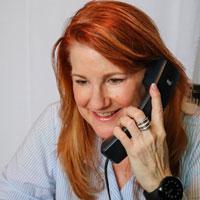Aug 12, 2019
An Ounce of Prevention
We read a lot about preventative health care: watch your diet, weight and sugar intake; get regular exercise and check-ups; reduce your stress (and please let me know what works for you – for a friend). There is a laundry list of items. If we practice what we’re preached, it doesn’t mean we won’t ever get sick or that genetics don’t play a role in our overall wellness. However, many studies have shown that these tactics not only have a positive impact on deterring certain health conditions, but that these good habits can even make us feel physically, mentally and emotionally better.
Now, what if we looked at caregiving from a preventative standpoint? What if we had easy to use and affordable technology that we could incorporate into the caregiving process that could have a positive – and potentially preventative – impact on the wellbeing of caregivers and care recipients? Plus, a positive ripple effect to insurance providers?
If you are reading this, you are likely aware of the developing caregiving crisis – not enough family and professional caregivers available to provide services to those who need it. Now, new remote monitoring technology for caregiving not only helps fill the care gap and ease the financial burden and stress on caregivers and care recipients, it can also impact escalating health care costs with its potential to reduce insurance claims. For example, providing the caregiver with information indicative of a developing condition could mean the difference between a simple prescription or office visit instead of an upsetting and costly ER visit or hospitalization.
So, just how can new technology support preventative measures in caregiving for caregivers, care recipients and even insurance providers?
How Prevention Can Help – Three Different Perspectives
The Caregiver: We love hearing from caregivers about how affordable and useful Theora® remote monitoring technology has helped give them more peace of mind by reducing the stress that is often experienced by busy caregivers. It is well-documented that many illnesses, including depression and heart disease, affect caregivers. Stress negatively impacts risk factors for both diseases. Many caregivers have full-time jobs, and missing work can mean lost income and more stress. Remote monitoring technology provides information to busy caregivers – even when they can’t physically be present – to know where a care recipient is, if they are okay, and have direct 2-way communication. Not only does this monitoring reduce stress, it helps caregivers know when they might be needed, or just to check-in.
The Care Recipient: Imagine being able to stay in your home of choice, but with the reassuring oversight that comes with unobtrusive remote monitoring? Technology that is more precise and can capture information that video can’t, providing valuable wellness data to caregivers while respecting the care recipient’s privacy. Data analytics that are integral to the technology provide current and historical activity changes that can proactively signal the need for caregiver intervention. Imagine being able to identify subtle changes that could signal a fall risk, enabling steps to be taken that help prevent a fall rather than just reacting to it? Care recipients can be more active and independent, with reduced social isolation, enjoying their usual activities knowing their caregiver is virtually “there” if needed. Studies show that people who are physically active are less likely to experience a decline in their mental function, have a lowered risk of developing Alzheimer’s disease, and possibly have improved thinking among people with vascular cognitive impairment.
The insurance provider: Insurance providers are realizing the benefits of non-clinical technology for caregiving, as one recent news report explains how some plans are changing to accommodate more supportive care for chronic conditions. The willingness of insurance providers to cover preventative assistance is a win for all. An ER visit or hospitalization can cost anywhere from $3000-$20,000-plus, depending on the severity. A remote monitoring wearable is less than $250, with a small monthly service fee. In the current economy of hugely escalating healthcare costs, imagine the positive impact of prevention for the insurance provider, in the form of reduced claims, and ultimately, for all of us in the form of better care and possibly even reduced rates!
At Theora Care, it has been our goal to provide affordable, easy to use technology to help bring more peace of mind to caregivers, with more independence with reassurance to care recipients. Please contact us if you want to discuss about how we can help your caregiving situation. And be sure to check with your insurance provider to find out if your plan reimburses for remote monitoring technology, as coverage seems to be increasing every day.

